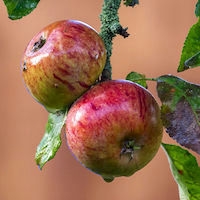
Duck Like
Mallard
Anas platyrhynchos

Length: 23 in. (58 cm )
One of the most widespread ducks in the world, it is often domesticated and crossed with other tame duck species. It is usually found in or near water from flooded fields, marshes, and lakes to backyard swimming pools, golf courses, and well-watered lawns in urban areas. The nest, made of vegetation and lined with feathers, is placed near water in cattails or reeds. In urban areas, the nest can be on lawns, at the base of a tree or other semi-protected areas. The Mallard feeds by grazing on grass, seeds, and acorns, or in the water by tipping up so its head and breast are underwater and only its tail and feet can be seen. Here it feeds on aquatic vegetation, insects and other invertebrates. Male mallards lose all of their flight feathers during the late summer molt and take on the appearance of the females during this effectively flightless period. In the southwestern US, female-plumaged Mallards with an all yellow-green bill are often called Mexican Ducks. Normal female Mallards have an orangish bill with dark patches.
The four-digit banding code is MALL.
Female | Richard Ditch(link is external)
Marsh / swamp

Open water
Riparian / River forest

Urban city
View Citation
Be Part of
Ask A Biologist
By volunteering, or simply sending us feedback on the site. Scientists, teachers, writers, illustrators, and translators are all important to the program. If you are interested in helping with the website we have a Volunteers page to get the process started.















